Lake Okeechobee discharges into the waterways of the Treasure Coast have become a focal point of the natural freshwater behemoth in the heart of Florida. Lake Okeechobee is a critical element of the state’s complex water management system and its water is routinely released into three rivers leading to the Atlantic Ocean and Gulf of Mexico.
Sometimes known just as “The Lake”, or even “Florida’s Inland Sea”, it’s the largest freshwater lake in the entire state, and the 8th largest in the contiguous US.
While the lake itself boasts some pretty impressive statistics, it also serves as an important life source that supports a significant amount of state agriculture, provides drinking water, and sustains vital ecosystems.
This vital resource, however, is at the heart of a longstanding environmental dilemma, where in order to have stormwater acceptance capacity, the lake occasionally needs excess water discharged into Treasure Coast waterways.
These Lake Okeechobee discharges, while essential for flood control measures, also have a substantial impact on local ecosystems, economies, and more.
In this article, we’re going to investigate the widespread, multifaceted aspects of the impact the Lake Okeechobee discharges have on the broader Treasure Coast ecosystems and communities.
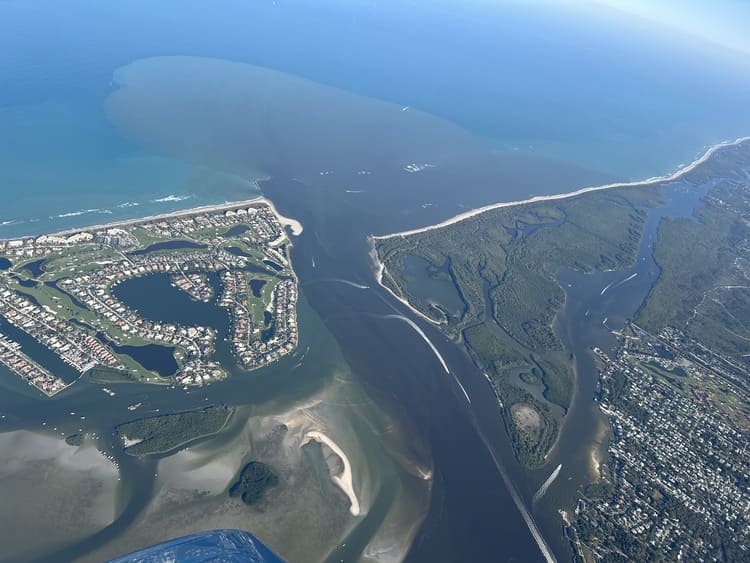
Lake Okeechobee discharges on the Treasure Coast (Source: Friends of the Everglades on X)
Upcoming Lake Okeechobee Discharge Information
The Army Corps of Engineers has announced the commencement of water discharges from Lake Okeechobee starting Saturday, February 17, in response to the lake’s elevated water levels, currently standing at 16 feet, 4 inches at the time of writing.
This decision is based on the need to proactively manage the water level in the lake to increase capacity for upcoming storm runoff, which is coming soon in the summer rainy season.
During the initial discharge period, roughly 2.1 billion gallons of water per day will be directed down the C-44 canal into the St. Lucie River from February 17 to 19, as per the Army Corps.
This volume will gradually decrease, with an eventual goal of 1.2 billion gallons per day over subsequent 14-day periods.
The eventual duration that will be needed is still uncertain, as the Army Corps is still unsure of when the endpoint for acceptable water level will be reached, but the goal is to have the water level lowered before the commencement of hurricane season on June 1.
As a comparison, the last discharge cycle lasted 83 days, from January 22 to April 15, 2023, during which 17.3 billion gallons of lake water were released into the St. Lucie River, equating to a 1-foot, 10-inch drop in the lake’s water level.
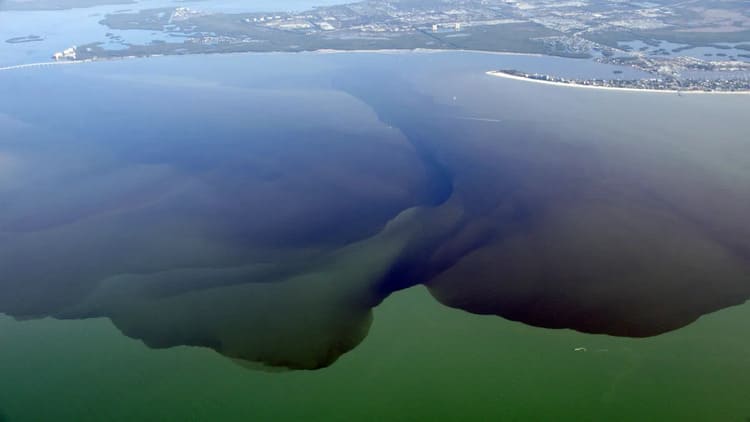
Discharges from Lake O in 2016 (Source: Captains for Clean Water)
A Closer Look at Lake Okeechobee Discharges
Discharges are a mechanism by which water from Lake Okeechobee is manually released into the St. Lucie River via the C-44 canal.
The lake accumulates water from rainfall and runoff spanning the entire Kissimmee River watershed that extends from Orlando to Okeechobee, which will understandably need occasional manual intervention to minimize the risk of flooding.
The retained water is held back by a series of dike systems that were created in the early 20th century, and which enable the managed discharges we see today.
This particular water management strategy is not without unique problems, and since the discharges are directed east and west, into the St. Lucie and Caloosahatchee Rivers, the artificial redirection of water poses a significant disruption to the southbound flow into the Everglades.
The sudden introduction of nutrient-rich freshwater into the brackish estuaries can result in substantial environmental challenges and alter the delicate balance of the ecosystems.
Environmental Impact of Discharges
As we mentioned, there are some significant side effects to discharging the lake’s freshwater into the nearby estuaries.
These side effects are profound and have multifaceted impacts and impact everything from the local Lake Okeechobee alligators to the myriad fish and coral of our Atlantic Ocean.
These discharge waters are typically heavy with agricultural runoff, which includes phosphorus and nitrogen from expansive farming areas in regions surrounding the lake.
These nutrient levels serve as a catalyst for several ecological disturbances in the nearby ecosystems of the rivers.
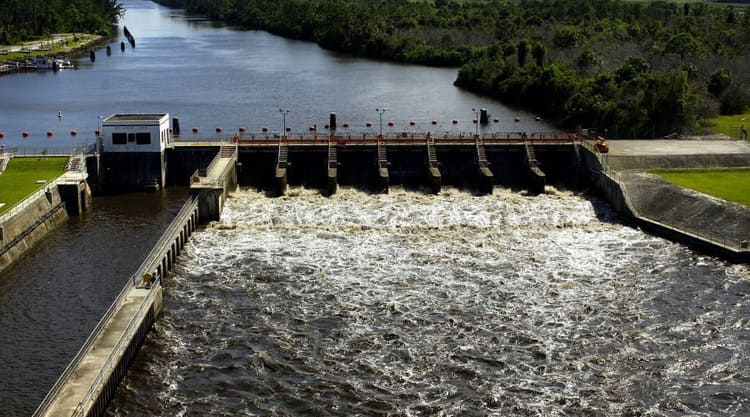
Water flowing through the locks of Lake Okeechobee (Source: Calusa Water Keeper)
Algae Blooms
One of the most visible and potentially alarming consequences of the discharges is the proliferation of potentially harmful algae blooms, including the infamous blue-green algae.
These algae blooms reduce water quality and create dangerously hypoxic conditions in the waterways, leading to depleted oxygen levels and large-scale fish kills.
These repeated fish kills work toward the eventual reduction in biodiversity in marine and estuarine life.
The thick, toxic carpets of algae have the potential to cover massive sections of water surface, which can block sunlight and stall the photosynthesis of vegetation, which can dismantle the entire local food chain.
Disrupted Salinity
Another substantial consequence of the influx of nutrient-rich water is that the natural salinity balance is disrupted.
The ecosystems found in estuaries are often critically dependent on delicately balanced salinity, and when that mix of saltwater and freshwater is offset, it can lead to big changes.
Changes in estuary salinity can cause the death of oysters, seagrasses, and other salt-tolerant species that form the supportive backbone of these estuarine systems.
The loss of seagrasses is particularly concerning, because while they may not seem significant at first glance, they are integral nursery habitats for countless species of fish and shellfish, both of which are essential components of the ecosystem and local fishing industry.
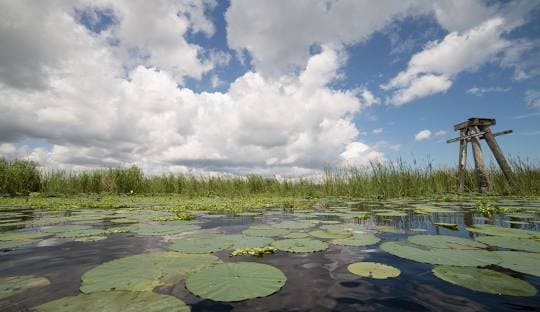
Long-Term Effects
Beyond the immediate, visible impact on flora and fauna, the alteration of naturally balanced ecosystems can have unimaginable long-term effects on general biodiversity and resilience.
The environmental health of Florida’s estuaries is critical, not just for the wildlife that lives there, but for maintaining the natural beauty and ecological balance of the Treasure Coast, which so many residents and visitors cherish.
Economic and Social Effects
The discharges from Lake O have a notable impact on the economy and communities of the Treasure Coast, typically surrounding tourism, local businesses, and property values.
The presence of pollutants and algae blooms can lead to beach closures and restrictions on fishing, which both undermine the goals of the recreational and hospitality sectors.
These challenges can also significantly diminish the quality of life for residents, as well as pose unique health risks from chronic exposure to various compounds.
Addressing the discharges is important not only to maintain good environmental stewardship but to help preserve the economic vitality and stability of the region and the social well-being of its communities.
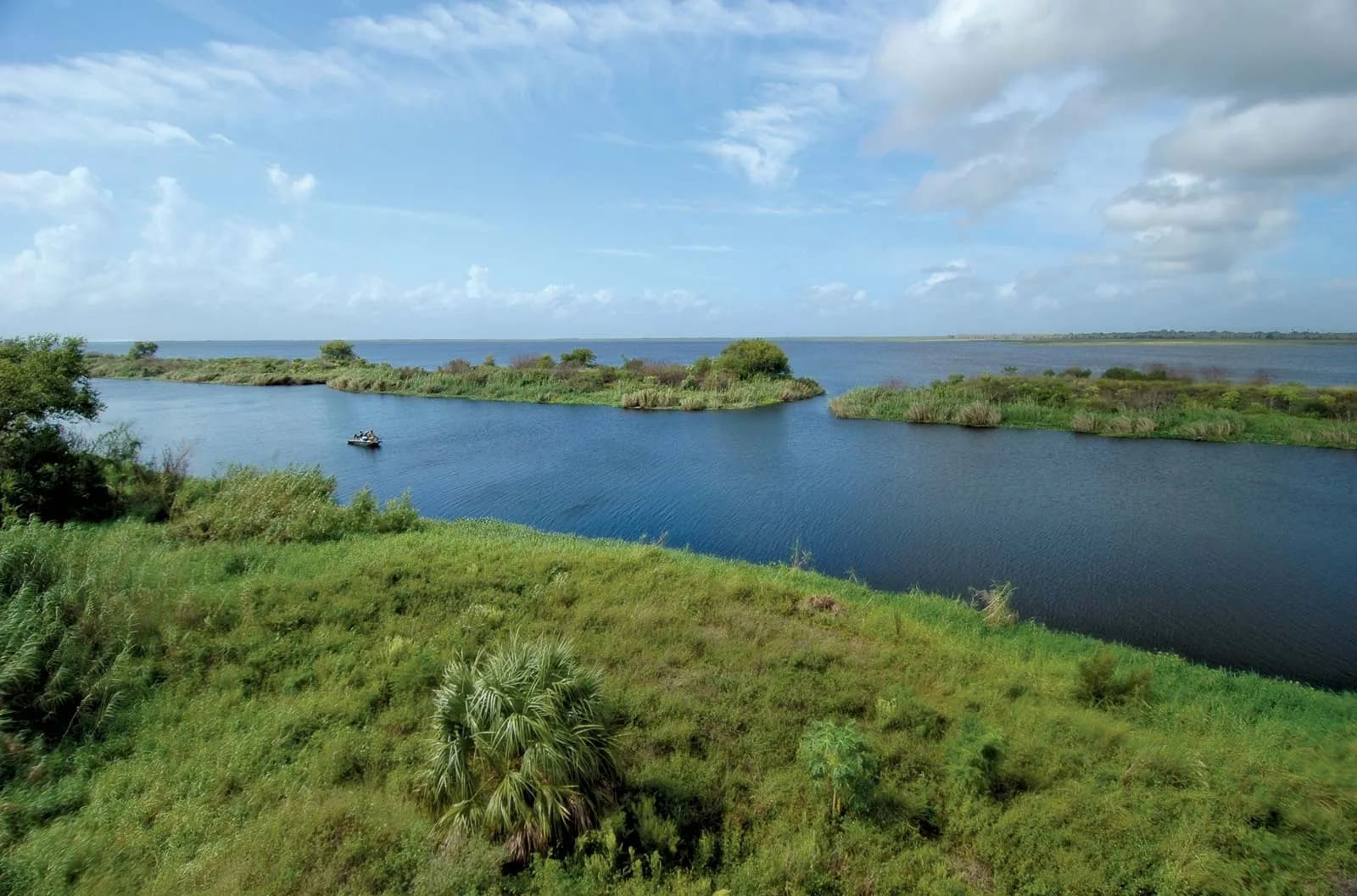
Efforts to Mitigate Negative Impacts
One of the efforts to mitigate the impacts of discharges is the Comprehensive Everglades Restoration Plan, which aims to redirect water southward to replenish the Everglades.
Also, the construction of additional storm water reservoirs and upgrades to existing wastewater treatment plants can help manage water levels and improve water quality.
Simultaneously, agricultural best practices can help reduce nutrient runoff, while increased community involvement and legislative actions support ongoing environmental initiatives.
Ongoing collaborative efforts such as these are going to be critical for finding a balance between flood control and ecological preservation, but they will also require substantial commitment from stakeholders.
Wrapping Up
The issue of the Lake O discharges and their effects on the nearby areas is a complex one, and it encapsulates a complex array of environmental, economic, and social dynamics.
While efforts to mitigate adverse effects are multifaceted and ongoing, they will require sustained commitment, adaptive strategies, and collaborative efforts.
Overall, the journey to a more sustainable and balanced water management system continues, and the collective drive to address the impacts of discharge is indicative of the broader commitment to environmental stewardship.





